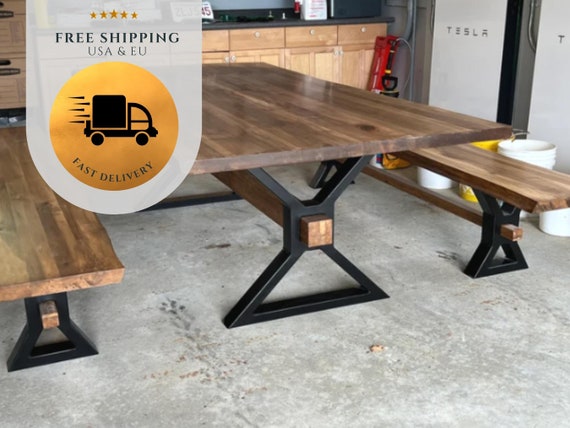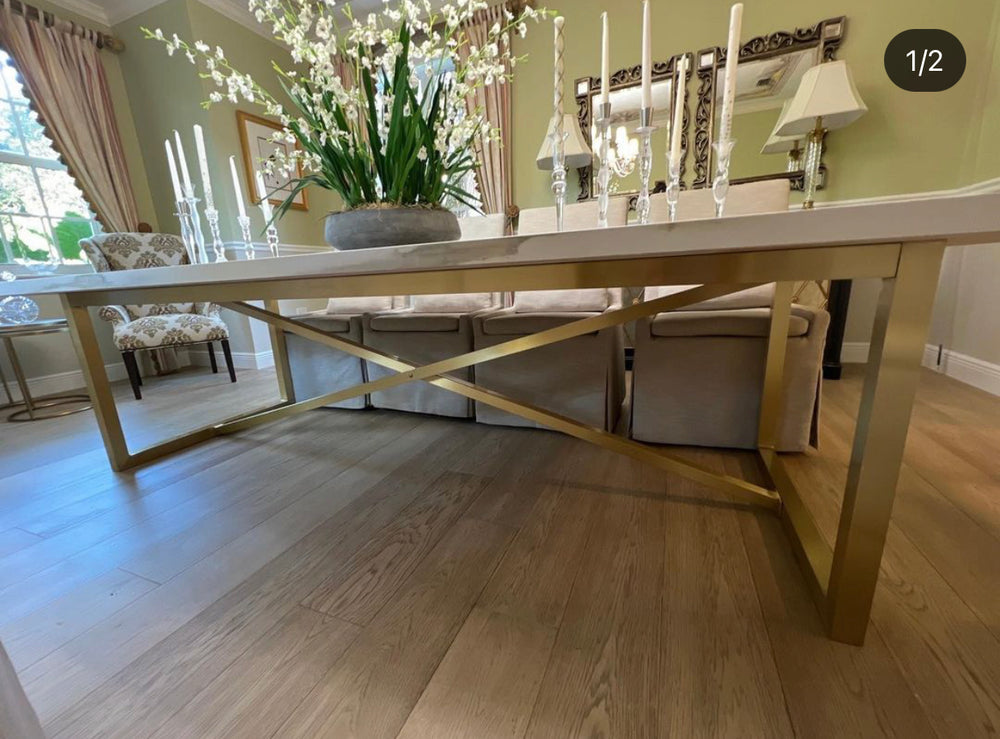Top Trends in Dining Room Table Legs to Elevate Your Dining Space
Top Trends in Dining Room Table Legs to Elevate Your Dining Space
Blog Article
An In-depth Take A Look At Table Leg Styles: Finding the Ideal Suit
Selecting the right table leg design is important for both aesthetic appeal and sensible functionality. Conventional four legs provide classic style and stability, while the stand base offers increased legroom and a modern-day look. For those with bigger tables, trestle legs make certain sturdy assistance, whereas hairpin legs present a mid-century modern vibe with their minimalist layout. The x-shaped legs mix contemporary design with boosted stability. Each of these alternatives brings unique advantages, making the option extra than just an issue of choice. Explore further to uncover which design completely complements your dining room and lifestyle.
Typical 4 Legs
Among the various sorts of table leg styles, the typical four-leg layout stays a timeless selection for numerous households. This timeless configuration provides a harmonious blend of performance and looks, making it a perennial favorite. 4 legs give well balanced assistance, ensuring the table stays stable and qualified of bearing significant weight. This is especially beneficial for families that frequently hold huge celebrations or utilize their eating table for several functions, such as job or crafting.
From a visual perspective, the standard four-leg layout can be quickly adjusted to numerous interior styles. Whether crafted from wood, steel, or a mix of products, these legs can be delicately sculpted, smooth and minimalistic, or anything in between. Their convenience allows them to complement both rustic and contemporary settings effortlessly.
Furthermore, the straightforward structure of the four-leg design facilitates convenience of motion and positioning within a space. Unlike even more facility bases, this style minimizes blockages, providing ample legroom for diners. In summary, the standard four-leg table leg style weds enduring beauty with sensible capability, making it an astute option for those seeking both type and function in their dining furniture.
Stand Base
Usually celebrated for its sophisticated and space-efficient design, the stand base is a notable alternative to the traditional four-leg arrangement in dining table leg designs. Without edge legs, restaurants are paid for greater freedom of motion, making it an optimal choice for round and oblong tables that advertise more intimate and inclusive celebrations.
The central column itself offers a canvas for intricate layouts and artistic expressions, adding an element of visual interest below the table. In recap, the stand base combines capability with style, making it a refined and sensible choice for varied dining settings.
Trestle Legs
Trestle legs supply a robust and ageless foundation for eating tables, characterized by their straight cross-bracing and tough assistance beam of lights. Originating from middle ages times, this layout has evolved yet maintained its vital framework, making it a perennial fave in both conventional and modern settings. The main trestle beam, commonly supported by two or even more vertical articles, offers outstanding stability, permitting bigger table lengths without the requirement for added legs.
A considerable benefit of trestle leg tables is the ample legroom they use. Unlike tables with 4 corner legs, the absence of blockages at the table's sides offers unobstructed room for chairs and diners, improving convenience and accessibility. This makes trestle tables suitable for suiting larger events, whether in a dining-room or a reception hall.
The aesthetic adaptability of trestle legs is significant. Available in a range of products such as timber, steel, and composite, they can be finished to complement a variety of indoor designs. From rustic farmhouse to sleek modern styles, trestle legs can be personalized to fit specific preferences. Their long-lasting appeal and functional benefits make trestle legs a compelling option for those seeking both style and functionality in their table.
Hairpin Legs

The allure of hairpin legs depends on their simpleness and versatility read the full info here - dining room table legs. Offered in a variety of materials, including steel and brass, they can be ended up in numerous colors to match various indoor styles. Whether combined with a rustic wood table top or a contemporary glass surface, hairpin legs easily mix functionality with a touch of vintage appeal
Longevity is another noteworthy function of barrette legs. Regardless of their fragile look, these legs are engineered to bear substantial weight, guaranteeing the table continues to be secure and safe and secure. Additionally, they are relatively easy to set up, making them a prominent important source option for DIY lovers and expert furnishings manufacturers alike.
X-Shaped Legs

Built from products such as steel, wood, or a mix of both, X-shaped legs can be customized to match various style choices. Steel legs typically offer a sleek and industrial feeling, ideal for loft-style houses and modern-day eating spaces. On the other hand, wood X-shaped legs offer a warmer, much more rustic allure, ideal for farmhouse or eclectic interiors. The adaptability in products allows property owners to tailor their eating tables to better fit their general style system.
In addition, the engineering behind X-shaped legs ensures even weight distribution, reducing the danger of wobbling and improving toughness. This makes them specifically fit for bigger eating tables that call for added assistance. Fundamentally, X-shaped legs mix functional design with contemporary appearances, making them a classic selection for varied eating atmospheres.
Final Thought
An extensive understanding of table leg styles reveals the distinctive features and advantages of each style. Standard four legs offer stability and classic allure, while pedestal bases a knockout post offer legroom and a streamlined look. Trestle legs make certain durable support for bigger tables, and barrette legs introduce a mid-century modern visual. X-shaped legs incorporate contemporary design with boosted security. Selecting the appropriate leg design makes sure both functional and visual contentment in any type of dining room.
Report this page